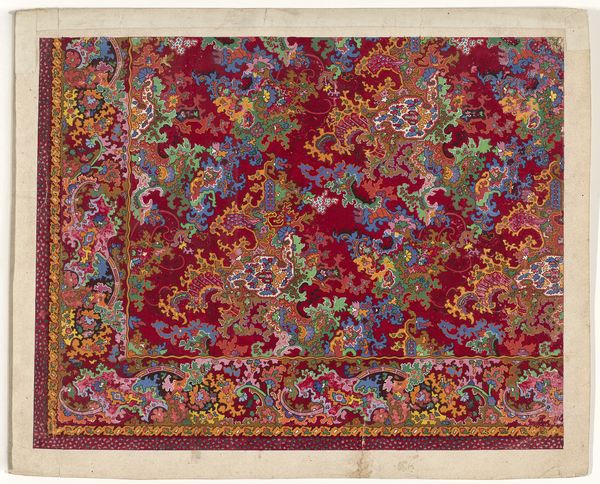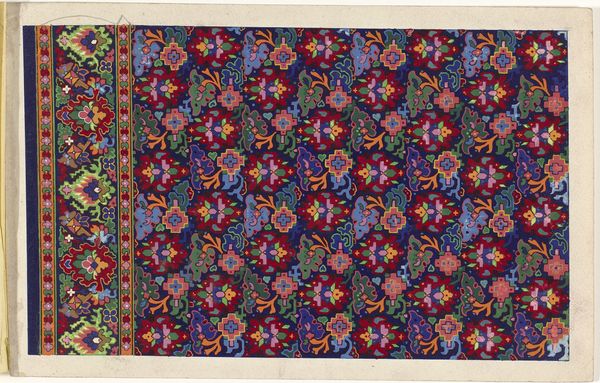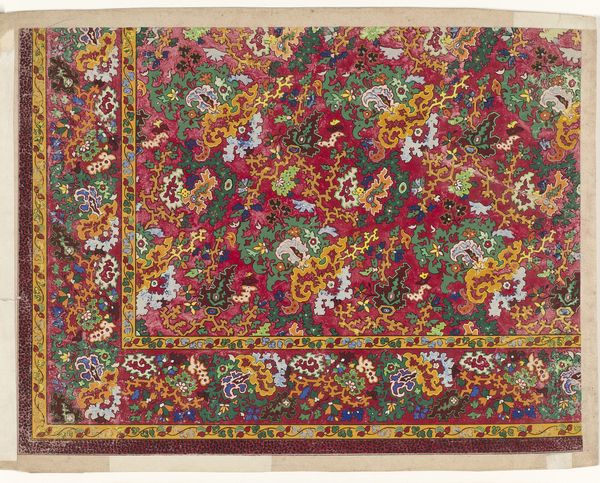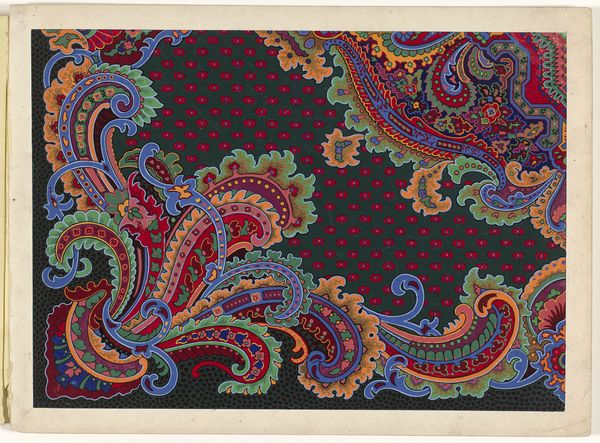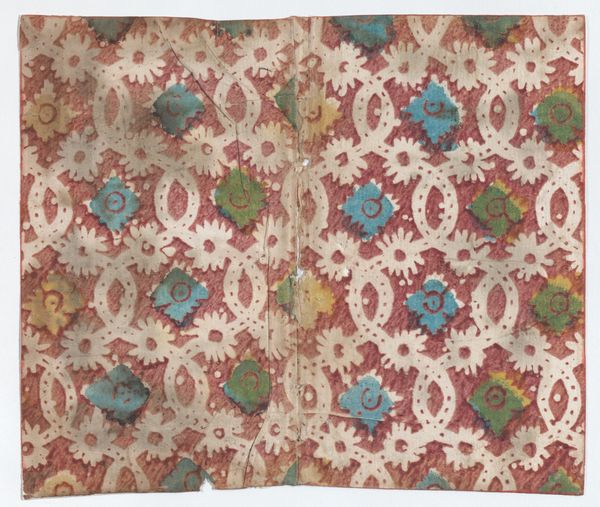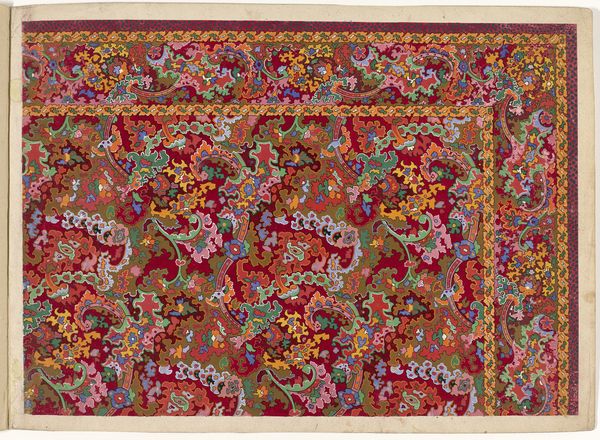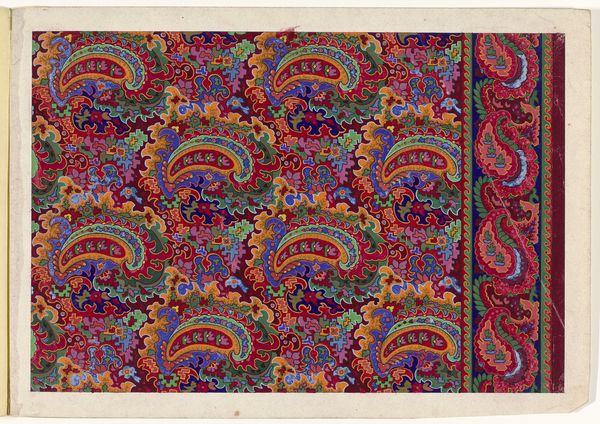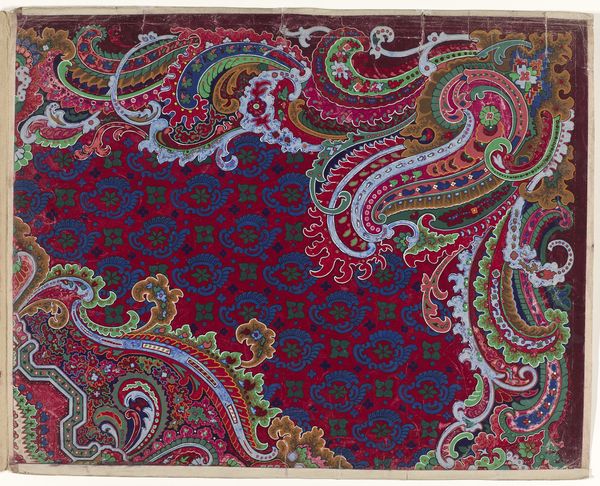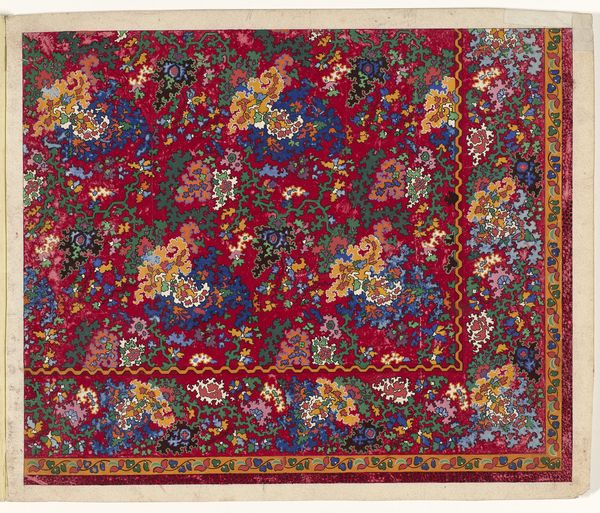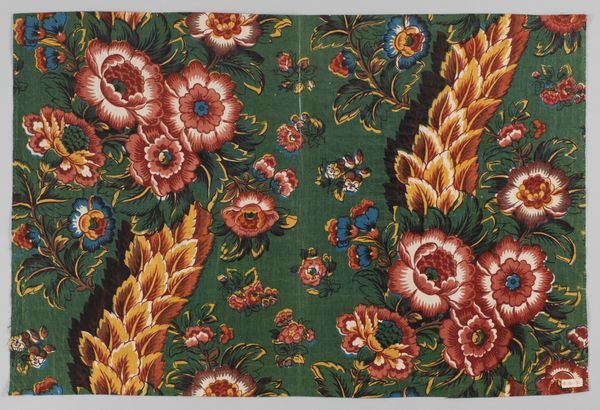
drawing, paper
#
drawing
#
paper
#
geometric pattern
#
organic pattern
#
flower pattern
#
repetition of pattern
#
pattern repetition
#
decorative-art
Dimensions: height 264 mm, width 411 mm
Copyright: Rijks Museum: Open Domain
Curator: At first glance, this drawing appears to be something quite comforting. It reminds me of something I'd have found at my grandmother's house when I was a kid. Editor: Indeed! The piece before us is "Ontwerp voor een tapijt," or "Design for a Carpet," created circa 1864 by an anonymous artist. Executed in mixed media on paper, it exemplifies the aesthetics of decorative art. Curator: Yes, there is an inviting domesticity at play. But there's also a disquieting psychedelic energy to it, particularly in the color choices. Like wandering into a dream, but maybe a slightly manic one. Editor: From a formalist perspective, the artwork hinges on the sophisticated deployment of pattern repetition. The floral motifs, interwoven with geometric elements, demonstrate an engagement with both organic forms and structured design. The dense, almost claustrophobic composition eschews traditional perspective in favor of a flattened picture plane. Curator: Claustrophobic, yes! I think that is the word. The design flattens everything into an inescapable surface, removing any sense of depth. All the vibrant, jewel-tone shades – blues, reds, greens – push forward, vying for attention, which does create a sense of unease. And then those almost lurid golden accents on the leaves and flowers… almost unsettling. Editor: Interesting. The absence of negative space directs our attention to the surface qualities. I'm intrigued by the almost obsessive level of detail that speaks to a deep engagement with the tenets of the Arts and Crafts movement. The border, mimicking a fringe, acts as a frame within a frame, further emphasizing the object-hood of the design. Curator: Exactly! The closer one looks, the more this "carpet" seems less about comfort and more about some controlled creative impulse threatening to burst. The tension makes the design interesting, not merely decorative. Editor: A point well taken. Its vibrant intricacy invites contemplation and encourages a richer understanding of decorative arts. Curator: It’s always exciting to discover such complex undertones residing within ostensibly simple aesthetics. Thank you for walking through that with me.
Comments
No comments
Be the first to comment and join the conversation on the ultimate creative platform.
